
About Andrew Cusack
 Writer, web designer, etc.; born in New York; educated in Argentina, Scotland, and South Africa; now based in London.
Writer, web designer, etc.; born in New York; educated in Argentina, Scotland, and South Africa; now based in London. read more
News
Blogs
Reviews & Periodicals
Arts & Design
World
France
Mitteleuropa
Knickerbockers
Argentina
The Levant
Africa
Cape of Good Hope
Netherlands
Scandinavia
Québec
India
Muscovy
Germany
Academica
Krummau, Crown of the Moldau
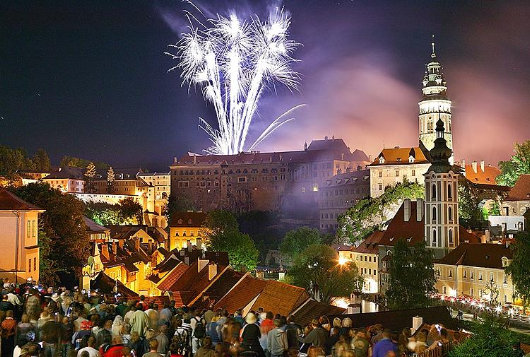
BY NOW THE denizens of this little corner of the web are surely aware of Krummau, the splendid castle and town that towers above the banks of the Moldau river in Bohemia. I was never particularly interested in Bohemia until Fr. Emerson came up to St Andrews and gave a talk on the Hapsburgs. Unfortunately, this was before they began to record the talks (and offer them online) as it was an excellent brief lecture that I’d love to revisit. Now Bohemia is one of my passions, in addition to an increasingly large burden of passions (Scotland, New York, Argentina, the Netherlands, South Africa, France, Hungary, Transylvania, Canada, Scandinavia, … ). The architecture is superb and varied, and of course the Duke of Krummau is none other than a certain Prague pol. The complex is no longer in the Schwarzenberg family, but is instead now the State Castle of Český Krumlov.
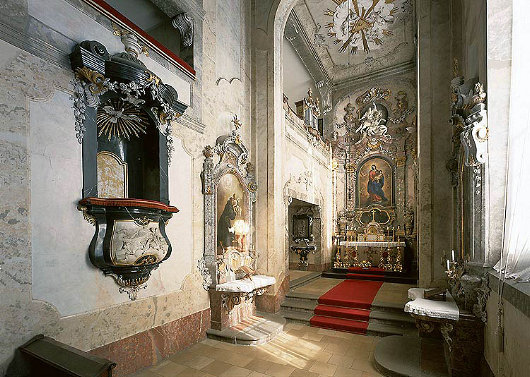
The Chapel of Saint George in the Castle once contained the skull and bones of Pope St. Callixtus I. The remains were obtained by the Emperor Charles IV, who gave them to the Rosenberg family who built the castle, from whom they (and the castle itself) passed to the Schwarzenbergs, only to be lost after 1614. Nonetheless, the skull of an unknown North African martyr came here in 1663, and tradition donated to the unknown saint the name of Callixtus also.
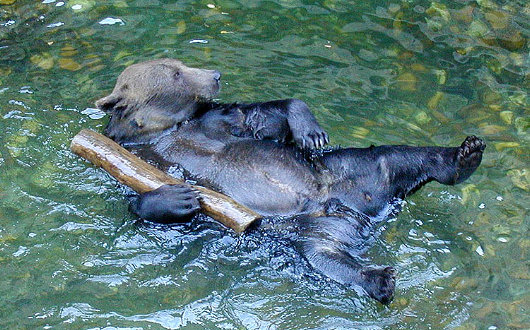
There is a long history of bear-keeping at Krummau, from at least the sixteenth century, and the castle has a specially devoted bear moat constructed in 1707. I am delighted to learn that this tradition has been revived by the current Czech overseers of the castle, who clearly are not mere bureaucrats but have a particular devotion to this magnificent place and its history.
The two adult ursine residents of Krummau are Vok and Kateřina. This aristocratic couple gave birth to their son Hubert, while the Zoological Park at Innsbruck has donated the young lady bear Marie Terezie. The bears of Krummau are an absolute delight to the children of the town, who sing carols to them at Yuletide, prepare them delicacies on holidays (under the supervision of the bear-keepers), and make sure that their bears never suffer for want of apples.
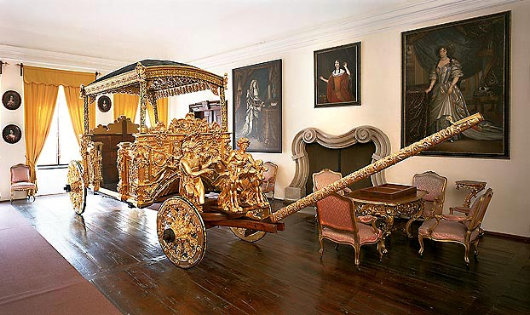
The castle also has on display the Golden Carriage of Duke Johann Anton I von Eggenberg, used during the Duke’s 1638 trip to Rome as envoy of the Holy Roman Emperor to Pope Urban VIII. The actual purpose of this coach was to convey the gifts of the Emperor to the Supreme Pontiff. The coach was sent to Hluboká by the Communist authorities, but it has been returned and restored, and rests in the Eggenberg Hall of the castle.
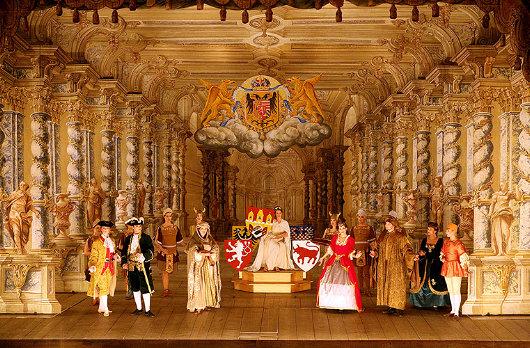
The magnificent Castle Theatre at Krummau is one of the stateliest court theatres in Europe. Among other current uses, it is home to the annual Festival of Baroque Arts organised by Hofmusici, a Czech ensemble of young musicians who perform Baroque-era music on period instruments. In addition to purely musical performances, baroque operas are performed in the Castle Theatre, for which the musicians dress in an appropriate court livery.
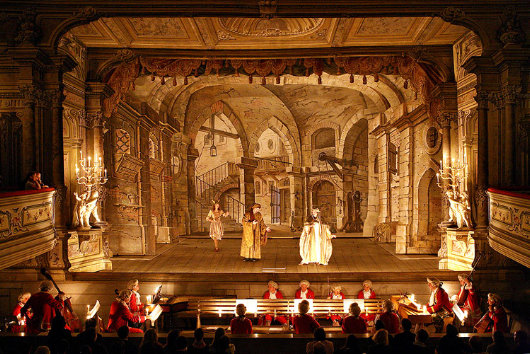
It is obvious that the best possible thing for a castle or palace is for a family with deep pockets and deep-rooted traditions to be in possession of it. We must rejoice nonetheless that at least in the case of the State Castle of Český Krumlov, this ancient gem has found caretakers who realise its peculiarity and preciousness.
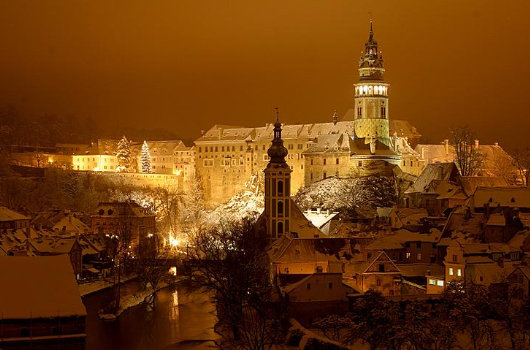
Search
Instagram: @andcusack
Click here for my Instagram photos.Most Recent Posts
- Sag Harbor Cinema March 26, 2025
- Teutonic Takeover March 10, 2025
- Katalin Bánffy-Jelen, R.I.P. March 3, 2025
- Substack Cusackiensis March 3, 2025
- In the Courts of the Lord February 13, 2025
Most Recent Comments
Book Wishlist
Monthly Archives
Categories



Bohemia and Moravia together beat the rest of Europe hollow with their collection of castles and palaces.
Their great aristocratic families were immensely wealthy and rather more cultured than their cousins in Hungary.
But even amongst such a wealth of history and beauty, there is nothing to beat Krumau. I was last there over twenty years ago, when it was just emerging from the long nightmare of Communism – the magnificence was there if sought, but only by brushing away the neglect of decades of Leftist indifference.
The transformation your photos reveal is little short of miraculous. Have you no photo of the weirdly Gothic fantasy which is the many-tiered bridge from the castle proper to the theatre? One of Europe’s most satisfyingly “old world” spectacles.
By the way, it is not Karl zu Schwarzenberg who is interested in regaining the castle for the family but his cousin Elisabeth, only child of the last male member of the senior line. So far, alas, her arguments have failed to persuade the Czech courts.
Good thing the Schwarzenbergs don’t own it still. Can you imagine what the costs or running such a place must be? Why, they would need back every acre they ever owned (some 1,500,000) in order to keep this beautiful monstrosity in proper order.
Everyone’s favorite hokey travel show host, Rick Steves, did a show on “The Czech Republic Beyond Prague” which visits this place. US viewers can watch it online, but it’s blocked to those of us in Europe:
http://www.hulu.com/watch/102479/rick-steves-europe-the-czech-republic-beyond-prague
I found this bit strangely and powerfully moving:
“[Bear keeping] has been revived by the current Czech overseers of the castle, who clearly are not mere bureaucrats, but have a particular devotion to this magnificent place and its history.”
It is quite an experience, isn’t it, to discover in another person, not a functionary fulfilling an assigned role or someone pursuing selfish gain, but instead a human being capable of simply loving something, like having children come to sign Christmas carols to a group of bears…
Bears, although wild and potentially deadly, are really cute and that photo of the swimming bear is really precious.
Scotland, New York, Argentina, the Netherlands, South Africa, France, Hungary, Transylvania, Canada, Scandinavia,
Andrew,
This makes you a scotoophile, francophile, scandophile, and perhaps a slavophile.
What is the word for someone who like the Netherlands?
How is your book collection coming?